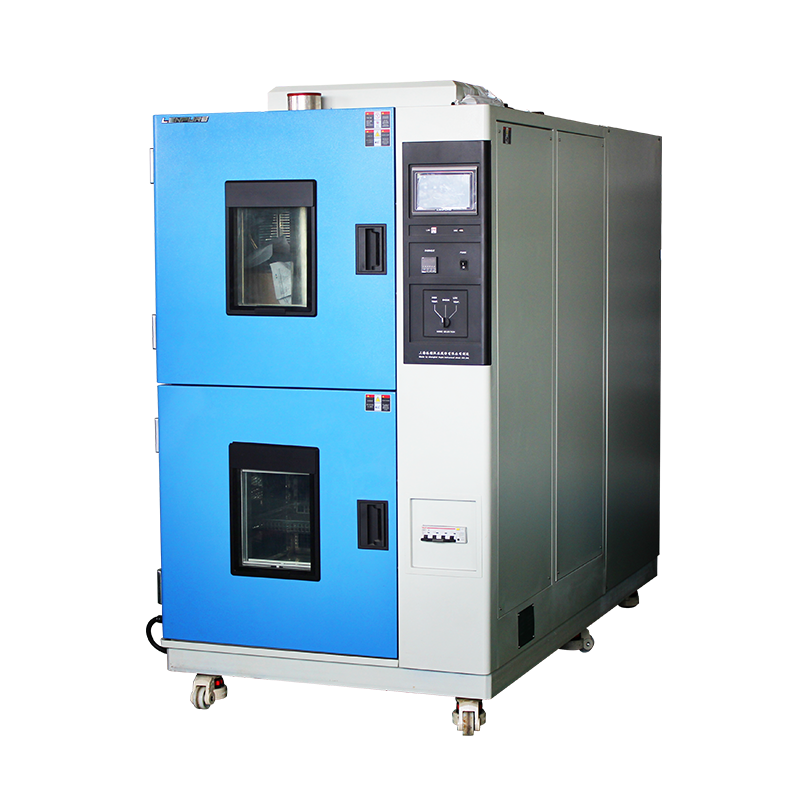

Thermal shock test chambers come in two main configurations: two-chamber and three-chamber designs. When purchasing this equipment, how should customers decide which structure is more suitable? In fact, each type has its own distinct features.
The differences between these two structures can be summarized in three key aspects:
1. Structural Differences
Two-chamber design: As the name suggests, it consists of two chambers—a high-temperature zone and a low-temperature zone.
Three-chamber design: Includes three chambers—a high-temperature zone, a low-temperature zone, and an additional test chamber where samples are placed.

2. Working Principle Differences
Two-chamber system: The test sample is placed in a motorized basket, which rapidly moves between the high- and low-temperature zones to achieve instantaneous temperature changes.
Three-chamber system: The sample remains stationary in the test chamber while hot or cold air is alternately introduced from the respective zones, modifying the test environment.
3. Functional Differences
Two-chamber advantages:
Faster temperature transition times due to direct sample movement.
More suitable for tests requiring rapid thermal cycling.
Three-chamber advantages:
Samples do not move, reducing potential mechanical stress or vibration effects.
Better for fragile or large samples that should remain fixed.
However, temperature switching is slower compared to the two-chamber system.
Conclusion
When selecting between a two-chamber and three-chamber thermal shock test chamber, customers should consider:
Test requirements (speed vs. sample stability).
Sample characteristics (size, fragility, and sensitivity to movement).
Desired temperature transition time.
By comparing these factors, users can choose the most suitable equipment for their specific testing needs.